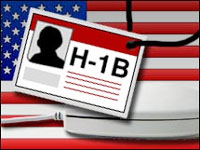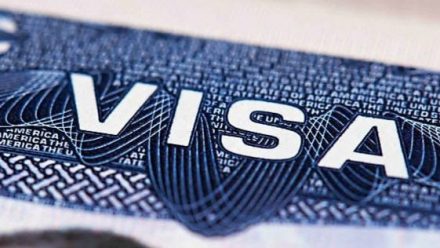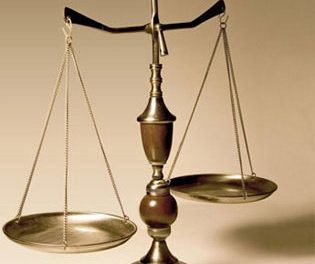Source: LawFirms.com
As the leading avenue for international students and/or highly-skilled professionals from other countries to live and work in the U.S., the H1B visa is the most solicited work permit/visa that also makes it possible for foreign nationals to apply for a green card or permanent resident status.
The H1B visa allows the applicant’s spouse and children to accompany him and here and live in the states. This non-immigrant visa is usually effective for a period of up to six years. In order to be eligible for the H1B visa, the candidate must be employed in a “specialty occupation” or a field requiring a high level of specialized knowledge, such as law, banking, architecture, accounting, IT, web design, and hospitality.
To apply for an H1B visa, the applicant must obtain sponsorship from a U.S.-based employer, who in turn must petition for the employee’s entry by filing the latter’s application with the U.S. Immigration Bureau.
What To Expect in 2011
The U.S. Citizenship and Immigration Services (USCIS) plans to revamp the H1B visa application process by requiring employers to submit an online petition with limited data. If the petition is chosen, the employers will then submit the remaining documentation and forms.
Changes to H1B Rules
The Employ American Workers Act (EAWA), which is part of the stimulus bill that President Obama signed into law in February of 2009 prevents employers from displacing American workers when recruiting H1B applicants if the employer obtains “covered funding” through the Troubled Asset Relief Program or pursuant to section 13 of the Federal Reserve Act. Companies that receive such funding are deemed “H-1B dependent” employers and must therefore fulfill the following requirements:
- Make good faith efforts to hire American workers or other immigrants authorized to work in the U.S.,
- Have offered the position to any American employee who applied and has the same or superior qualifications for the position that is intended for the H1B applicant;
- Have not displaced American employees working within the period commencing 90 days before the H1B petition was filed and terminating 90 days following its filing; and
- Will not assign an H1B employee to another employer unless it has found out whether the latter has laid off or plans to lay off a U.S. employee within 90 days preceding or following the H1B worker’s placement.
EAWA, which is only applicable to U.S. employers that have obtained covered funding and seek to recruit new H1B workers, will be in effect until February 17, 2011. It is applicable to (1) any petition or LCA filed on or after February 17, 2009 relating to any hiring by a new employer, regardless of whether the applicant already has an H1B visa and including simulteanous employment and (2) to new hires from petitions approved prior to February 17, 2009 if the H1B visa holder had not in fact begun employment prior to that date.
Petitions to extend a current employee’s H1B visa with the same employer or to change the status of an employee currently working in the U.S. to that of an H1B status with the same employer are not subject to EAWA’s requirements.
Quota
The U.S. Congress fixes a cap for the number of H1B visas that may be issued annually. For fiscal year 2010, the quota is set at 65,000 visas per year, in addition to 20,000 for foreign students who complete a master’s degree or higher from a U.S. university.
There is no cap on H1B recipients who transfer their visa to a different sponsor or employer or who add employers or on new H1B applications with universities, government research institutes, and non-profit organizations. Visa renewals are not counted in the annual quotas. Exempt from the annual cap are applicants who held H1B visas within the last six years and have not traveled outside the U.S. for a period exceeding 365 consecutive days as well individuals presently holding H1B visas.
H1B Timeline
The American Competitiveness in the 21st Century Act (AC21), which was passed on October 17, 2000, made it possible for H1B employees to change employers and start working for a new company upon the filing of the H1B petition by the new employer. This is referred to as the H1B portability provisions.
Beginning in 2005, all employers signing the Labor Condition Application had to state that 1) there is no labor dispute involving a lockout or strike at the workplace; 2) working conditions of the job will not negatively impact those of similarely-situated American workers; an 3) the prevailing wage for the employment sector in question will be paid.
Pursuant to the U.S. Department of Labor’s labor certification system known as PERM, processing times for labor certification were reduced to a period of less than 90 days.
In May of 2007, the U.S. Congress passed the Sanders Amendment which raised the scholarship and training fee for the H1B visa from $1500 to $5000 for employers with more than 25 workers employed full-time.
In February 2009, the American Recovery and Reinvestment Act of 2009 was signed into law. This stimulus bill placed restrictions on the employment of H1B workers by financial institutions and some banks, providing that they can only do so if equally-or-better-qualified American workers were offered positions. The bill also prohibited banks from recruiting H1B workers in fields in which American workers had been laid off.
How the Current US Economy will Affect the H1B Applicants
With the grim unemployment figures and the slump in hiring, international students will find it harder to land jobs upon graduating from college. With firms that typically rely on H1B contractors slashing their budgets and unlikely to venture into new projects, the demand for H1B workers can be expected to decline.
However, if the economy improves, outsourcing firms will be filing more H1B visas than in earlier years.
2011 H-1B FAQ for F-1 visa/OPT holders
These Questions & Answers address the automatic extension of F-1 student status in the United States for certain students with pending or approved H-1B petitions (indicating a request for change of status from F-1 to H-1B) for an employment start date of October 1, 2009 under the FY 2010 H-1B cap.
What is the H-1B cap?
The cap is the congressionally-mandated limit on the number of individuals who may be granted initial H-1B status or visas during each fiscal year. For FY 2010, the cap is 65,000.
Not all H-1B beneficiaries are subject to the cap. Congress has provided that the first 20,000 H-1B petitions filed on behalf of aliens who have earned a U.S. masters’ degree or higher are exempt from the fiscal year cap. H-1B petitions filed on behalf of beneficiaries who will work at institutions of higher education or a related or affiliated nonprofit entities, or at nonprofit research organizations or governmental research organizations are exempt from the fiscal year cap. Generally, H-1B beneficiaries seeking to extend status and/or add employers are not subject to the cap.
What do Current F-1/H-1B Extension Regulations Allow?
Current regulations allow certain students with pending or approved H-1B petitions to remain in F-1 status during the period of time where an F-1 student’s status and work authorization would otherwise expire, and up to the start of their approved H-1B employment period.
This is referred to as filling the “cap gap”, meaning the regulations provide a way of filling the “gap” between F-1 and H-1B status that might otherwise occur if F-1 status was not extended for qualifying students. An interim final rule published in the Federal Register last year authorized a cap gap extension for eligible students. See 73 FR 18944 (April 8, 2008) “Extending Period of Optional Practical Training by 17 Months for F-1 Nonimmigrant Students With STEM Degrees and Expanding Cap-Gap Relief for All F-1 Students With Pending H-1B Petitions.”
How does “Cap-Gap” Occur?
An employer may not file, and USCIS may not accept, an H-1B petition submitted earlier than six months in advance of the date of actual need for the beneficiary’s services or training. As a result, the earliest date that an employer can file an H-1B petition is April 1, for the following fiscal year, starting October 1. If USCIS approves the H-1B petition and the accompanying change-of-status request, the earliest date that the student may start the approved H-1B employment is October 1.
Consequently, F-1 students who do not qualify for a cap gap extension, and whose periods of authorized stay expires before October 1, are required to leave the United States, apply for an H-1B visa at a consular post abroad, and then seek readmission to the United States in H-1B status, for the dates reflected on the approved H-1B petition.
Which petitions and beneficiaries qualify for a cap gap extension?
H-1B petitions must be timely filed on behalf of an eligible F-1 student. “Timely filed” means that the H-1B petition (indicating change of status rather than consular processing) was filed during the H-1B acceptance period, while the student’s authorized duration of status (D/S) admission was still in effect (including any period of time during the academic course of study, any authorized periods of post-completion OPT, and the 60-day departure preparation period, commonly known as the “grace period.”)
Once a timely filing has been made, the automatic cap gap extension will begin and will continue until the H-1B process has been completed. If the student’s H-1B petition is selected and approved, the student’s extension will continue through September 30th unless the petition is denied or revoked.
If the student’s H-1B petition is not selected, the student will have the standard 60-day grace period from the date of the rejection notice to prepare for and depart the United States. Students are strongly encouraged to stay in close communication with their petitioning employer during the cap gap extension period for status updates on the H-1B petition processing. A Form I-797, Notice of Action, with a valid receipt number, is evidence that the petition was filed and accepted.
How does a student covered under the cap gap extension obtain proof of continuing status?
The student should go to their Designated School Officer (DSO) with evidence of a timely filed H-1B petition (indicating a request for change of status rather than for consular processing), such as a copy of the petition and a FedEx, UPS, or USPS Express/certified mail receipt. The student’s DSO will issue a preliminary cap gap I-20 showing an extension until June 1st. If the student’s petitioning employer receives a notice of selection from USCIS, the student should return to his or her DSO with a copy of the receipt notice, if possible, for issuance of a new cap gap I-20 indicating the continued extension of status.
Students can also check the Student and Exchange Visitor Program information from the Related Links section of this page.
What if the post-completion OPT expired before April 1? It appears that F-1 status would be extended, but would OPT also be extended?
A student who completed his or her post-completion OPT and who subsequently was in a valid grace period on April 1, would benefit from an automatic extension of his or her D/S admission under the cap gap, if the H-1B petition is filed during the H-1B acceptance period, which begins on April 1. The employment authorization, however, would not be extended automatically, because it already expired and the cap gap does not serve to reinstate or retroactively grant employment authorization.
Is a student who becomes eligible for an automatic extension of status and employment authorization, but whose H-1B petition is subsequently rejected, denied or revoked, still allowed the 60-day grace period?
If USCIS denies, rejects, or revokes an H-1B petition filed on behalf of an F-1 student covered by the automatic cap gap extension, the student will have the standard 60-day grace period (from notification of the denial, rejection, or revocation of the petition) before he or she is required to depart the United States..
For denied cases, it should be noted that the 60-day grace period does not apply to an F-1 student whose accompanying change of status request is denied due to discovery of a status violation. Such a student in any event is not eligible for the automatic cap gap extension. Similarly, the 60-day grace period and automatic cap gap extension would not apply to the case of a student whose petition was revoked based on a finding of fraud or misrepresentation discovered following approval. In both of these instances, the student would be required to leave the United States immediately.
May students travel outside the United States during a cap gap extension period and return in F-1 status?
The regulations at 8 CFR 214.2(f)(13) state that a student who has an unexpired EAD issued for post-completion OPT and who is otherwise admissible may return to the United States to resume employment after a temporary absence. By definition, however, the EAD of an F-1 student covered under a cap gap extension is necessarily expired. As a result, if the student elects to travel outside the United States during a cap gap extension, he/she should be prepared to apply for an H-1B visa at a consular post abroad prior to returning. As the H-1B petition is presumably for an October 1 or later start date, the student should be prepared to adjust his/her travel plans, accordingly.
Do the limits on unemployment time apply to students with a cap gap extension?
Yes. The 90-day limitation on unemployment during the initial post-completion OPT authorization continues during the cap gap extension.
If a student was not in an authorized period of OPT on the eligibility date for the cap gap extension, can the student work during the cap gap extension?
No. In order for a student to have employment authorization during the cap gap extension, the student must be in an approved period of post-completion OPT on the eligibility date.
May a student eligible for a cap-gap extension of status and employment authorization apply for a STEM OPT extension while he or she is in the cap-gap extension period?
Yes. However, such application may not be made once the cap-gap extension period is terminated (e.g., rejection, denial, or revocation of the H-1B petition), and the student enters the 60-day departure preparation period.
What is a STEM OPT extension?
F-1 students who receive science, technology, engineering, and mathematics (STEM) degrees included on the STEM Designated Degree Program List, are employed by employers enrolled in E-Verify, and who have received an initial grant of post-completion OPT related to such a degree, may apply for a 17-month extension. F-1 students may obtain additional information about STEM extensions on the Student and Exchange Visitor Program website from the Related Links section of this page.
B visa, the candidate must be employed in a “specialty occupation” or a field requiring a high level of specialized knowledge, such as law, banking, architecture, accounting, IT, web design, and hospitality.
To apply for an H-1B visa, the applicant must obtain sponsorship from a U.S.-based employer, who in turn must petition for the employee’s entry by filing the latter’s application with the U.S. Immigration Bureau.







